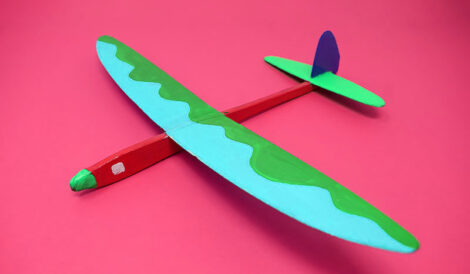What is Aeromodelling?
Aeromodelling is the art and science of designing, building, and flying miniature aircraft models, has undergone a remarkable evolution since its inception. From its early beginnings as simple rubber band-powered models to the advanced remote-controlled drones and aircraft of today, aeromodelling has captured the imagination of enthusiasts, engineers, and innovators alike. Let’s delve into the fascinating journey of its evolution:
- Early Origins and Model Gliders (Late 19th to Early 20th Century): The roots of aeromodelling can be traced back to the late 19th century when inventors and aviation pioneers like Sir George Cayley created model gliders to study the principles of flight. These early models laid the groundwork for understanding aerodynamics and control mechanisms.
- Rubber Band-Powered Aircraft (Early to Mid-20th Century): The early 20th century saw the development of rubber band-powered model aircraft. These models used wound rubber bands to power propellers, giving birth to a new era of more controlled and sustained flights. Innovations in lightweight materials and propeller design led to longer flight times and increased interest in the hobby.
- Control Line Models (Mid-20th Century): In the mid-20th century, control line models gained popularity. These models were controlled by cables or wires attached to a handle held by the operator. This allowed for basic maneuvers like loops and rolls, paving the way for more dynamic and interactive flights.
- Radio Control Revolution (Late 20th Century): The introduction of radio control systems in the 1960s marked a pivotal moment in the evolution of aeromodelling. Remote-controlled aircraft became more practical and versatile, enabling pilots to control multiple functions simultaneously, such as throttle, ailerons, elevator, and rudder. This era saw a rapid advancement in technology, materials, and aerodynamic design.
- Advancements in Materials and Design (Late 20th Century to Present): The use of lightweight materials like foam, carbon fiber, and composite materials revolutionized aeromodelling. These materials allowed for complex and realistic designs while maintaining low weight for improved performance. Electric propulsion systems also became more efficient and accessible, contributing to the rise of electric-powered model aircraft.
- Drone Technology and FPV (First-Person View) Flying (21st Century): The 21st century witnessed the explosion of drone technology, which has significantly impacted the aeromodelling landscape. Drones, often equipped with cameras and sensors, are used for various applications, including aerial photography, surveillance, mapping, and recreational flying. First-Person View (FPV) flying emerged, allowing pilots to experience flight from the perspective of the aircraft, further enhancing the immersive experience.
- Autonomous and AI-Enhanced Systems (Present and Beyond): As technology continues to advance, autonomous and AI-enhanced systems are becoming integral to aeromodelling. Drones equipped with artificial intelligence can perform tasks such as obstacle avoidance, autonomous navigation, and even complex aerobatics. These innovations are pushing the boundaries of what’s possible in aeromodelling.
In conclusion, the evolution of aeromodelling reflects the progress of aviation technology and engineering over time. From the humble beginnings of model gliders to the sophisticated drones of today, aeromodelling has grown from a simple hobby to a multidisciplinary field that combines elements of physics, engineering, materials science, and computer technology. As we move forward, it’s exciting to anticipate how further advancements will shape the future of aeromodelling

